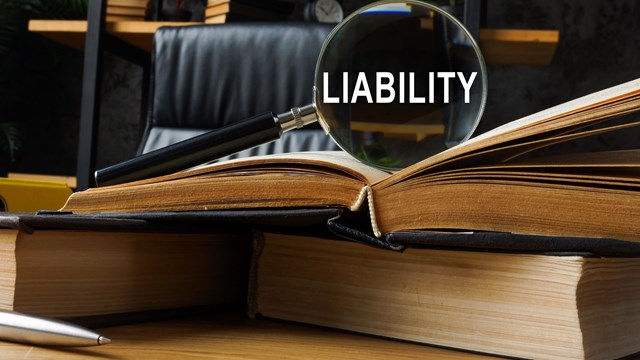
Insurance and Mold Litigation
A Toxic Pill to Swallow
By Alan R. Lyons and Mary Ellen Shuttleworth
While panic and alarm are not warranted, the time is now for real estate owners, developers, lenders and borrowers to begin to pay attention to toxic mold and their potential liability for property damage or personal injury. Though the nationwide mold discussion chronicles back to 1995, when the Centers for Disease Control (“CDC”) linked a cluster of child-deaths in Cleveland to black mold, new momentum is pushing the toxic mold issues to the forefront. Verdicts have fallen on the shoulders of insurance companies and property owners alike, leaving them to bear costs associated with the multi-million settlements. It is undeniable that the mold debate is highly controversial, but it is still questionable whether mold litigation is going to take off in New York. While the debate lingers on, recent multi-million dollar verdicts and settlements make a thoughtful discussion on mold timely.
Currently there is no coverage for mold in most of today’s standard liability insurance policies. It is available for purchase, but typically at a high price. Obtaining mold coverage is advisable in certain, but not all, circumstances. This article will address the factors that real estate owners, developers, lenders and borrowers should consider when assessing their exposure to mold litigation and whether or not to purchase mold liability coverage.
Assessing the Mold LiabilityThreat
Toxic mold, Stachybotrys chartarum or black mold, naturally grows in indoor environments where there is constant moisture; it can grow on material with a high cellulose and low nitrogen content, like fiberboard, gypsum board, paper, dust, and lint. Mold cases typically arise when a leak, water damage, excessive humidity, condensation or flooding give way to a condition that supports the growth of mold that, in turn, can cause property damage or personal injury. Claims usually allege negligence, strict liability, implied and express contract, constructive eviction, breach of contract, and/or nuisance. Property owners can also be found liable on a theory of constructive notice where they should have known of the defect.
Mold-related illness claims may be more difficult to prove. Mold can be distinguished from other injury-causing toxins, like asbestos, for reasons that make mold liability lawsuits potentially less damaging. First, the CDC and the bulk of scientific research have been unable to prove a causal link between mold and the injuries typically complained of by plaintiffs. This makes liability more difficult to prove. Second, unlike asbestos, mold-related illnesses have a shorter latency period, illness is usually immediately apparent, and any injury is usually not as severe or permanent. Third, there are currently no federal or state regulations regarding safe or unsafe levels of mold. Finally, unlike asbestos, mold was never a useful product created by a manufacturer that contained a harmful toxin, so proving liability becomes more tenuous.
Recent Verdicts
Given the lack of a clear standard for assessing mold-related claims, defeating a mold liability suit is not a sure thing. In recent years, there have been significant, multi-million dollar verdicts and settlements for mold-related property damage and personal injuries.
Fearing a debilitating litigation boom, insurance companies have taken a proactive approach and more than thirty-five states, including New York, have successfully lobbied insurance regulators to permit insurers to exclude mold coverage in their policies. Increasingly, liability insurance policies now contain mold exclusions, cap payments or offer mold coverage as an add-on to general liability coverage. Partially as a result of the insurance companies bowing out and partially as a result of a more aggressive plaintiffs’ bar, property owners are increasingly being named as defendants.
Real Estate Transactions & Mold Litigation
In addition to the recent litigation, the nature of real estate transactions has also changed with the rise or threat of mold litigation. Lenders and buyers should be cognizant of whether mold is a potential issue when inspecting a building; this is a fact-specific inquiry that should take into consideration the location of the property, the climate, and the extent of successful mold litigation in that jurisdiction’s courts.
Another new development in real estate transactions is that lenders are increasingly requiring borrowers to institute operations and management programs for mold management at their facilities and continuously verify that they are in compliance with training maintenance and routine inspections. However, lenders have not gone so far as to require mold coverage as a routine condition to funding a loan. In any event, the threat of mold litigation should not be overstated with regard to its effect on real estate transactions. As long as parties pay attention to the likelihood of mold becoming a problem and determine how to share the risk, mold need not be the downfall of a real estate transaction.
When Mold is Found
In the event of a mold discovery, prompt remediation of contaminated materials and infrastructure repair are the most important primary responses for property owners. After recognizing the need for remediation, a property owner must consider a few additional factors. First, there are no federal, New York State or New York City regulations for remediation, but the New York City Department of Health and Mental Hygiene (DOMH) guidelines can provide a helpful framework. Second, in addition to there being no regulations, there is also no certification process for remediation specialists, so property owners should take caution in selecting such professionals.
To Purchase Mold Coverage, Or Not
Property owners should determine whether their current insurance will provide coverage in the event of a mold claim. Unfortunately, there is no easy litmus test. Whether coverage for a mold claim is excluded by the terms of a policy can be a daunting process and one with which the courts have been struggling. A successful claim for coverage will require that the insured prove, inter alia, that the loss occurred during the coverage period, that there is no mold exclusion and, if there is a pollution exclusion, that it does not bar coverage. Even where coverage is found, property owners could be held liable under owned-property exclusions. Property owners should pay particular attention to the exclusions in their insurance policies and anticipate insurers’ defenses.
Waiting for a judicial determination of coverage may not be palatable for some property owners who will prefer to protect themselves by procuring mold liability coverage. If a property owner anticipates being susceptible to a mold claim, purchasing mold liability coverage should be considered. The best time to think about buying mold coverage is during a renovation or other development when the property owner or developer can oversee and assess the risk that may be lurking behind the walls.
Preempting Exposure to Mold Litigation
Real estate professionals—property owners, lenders, and borrowers—should realize that mold need not necessarily be an impending public health crisis or a litigation explosion. Property owners can manage the risk of mold and prevent litigation by (1) sharing the mold risk in real estate transactions, and (2) developing policies and procedures for dealing with leaks and mold in practice.
Property owners should have a realistic handle on the threat of mold litigation. The verdict and settlements numbers may be staggering, but considering the reality of the situation, mold litigation is largely preventable. Early detection and rapid response to potential mold-causing conditions are keys to preventing costly liability. Property owners should take care to ensure that tenants report leaks, that building managers take leak reports seriously, and that they act quickly to remediate the conditions. One way to do this is to include an information disclosure statement in a lease, which will put tenants on notice for potential mold growth and require them to disclose any leaks or water damage. Well-informed tenants, maintenance personnel and management, coupled with well-documented maintenance and inspection can halt potentially dangerous and costly mold situations in nearly every case.
Alan R. Lyons and Mary Ellen Shuttleworth are associates with the law firm of Herrick, Feinstein LLP, with offices in New York City, Newark and Princeton, New Jersey.









6 Comments
Leave a Comment